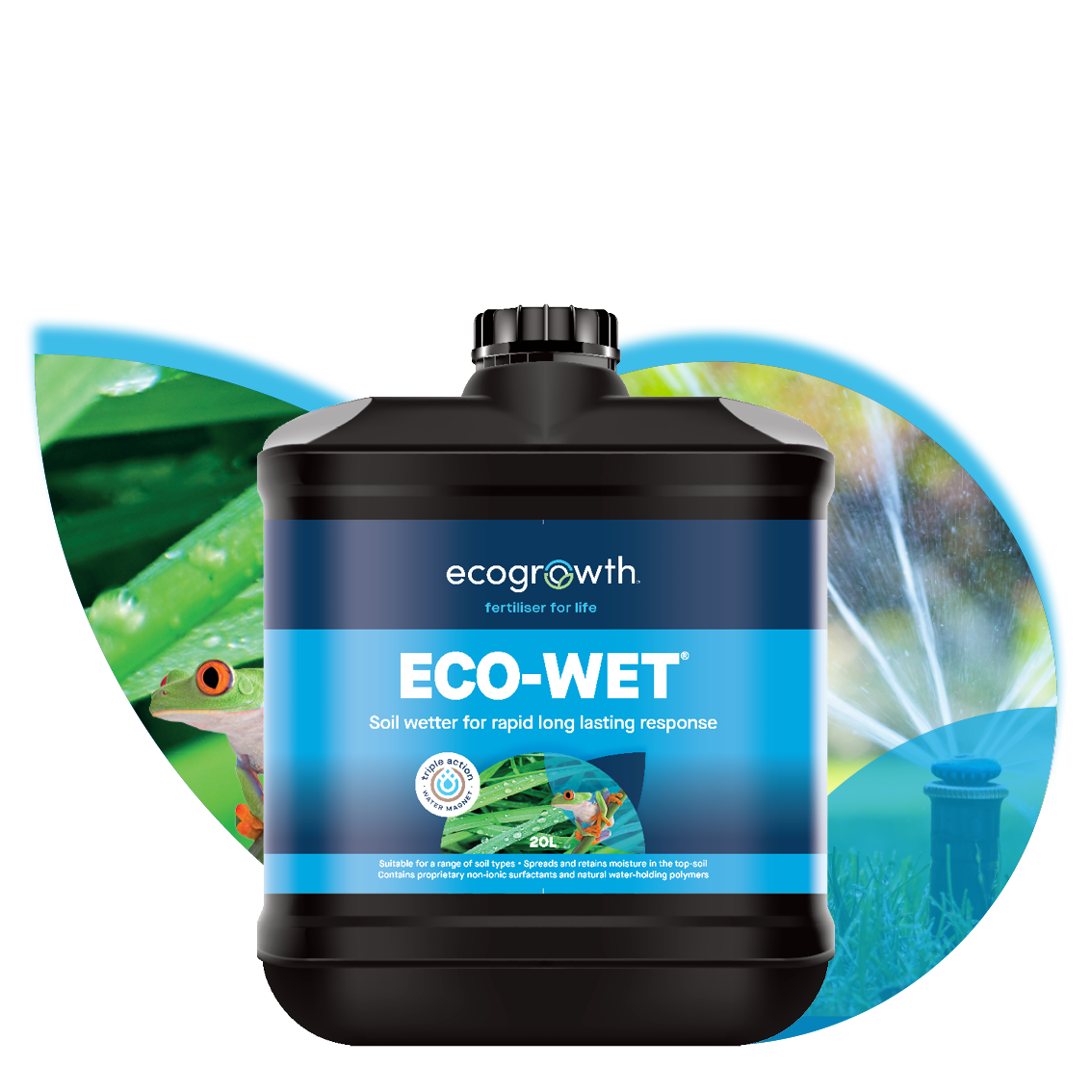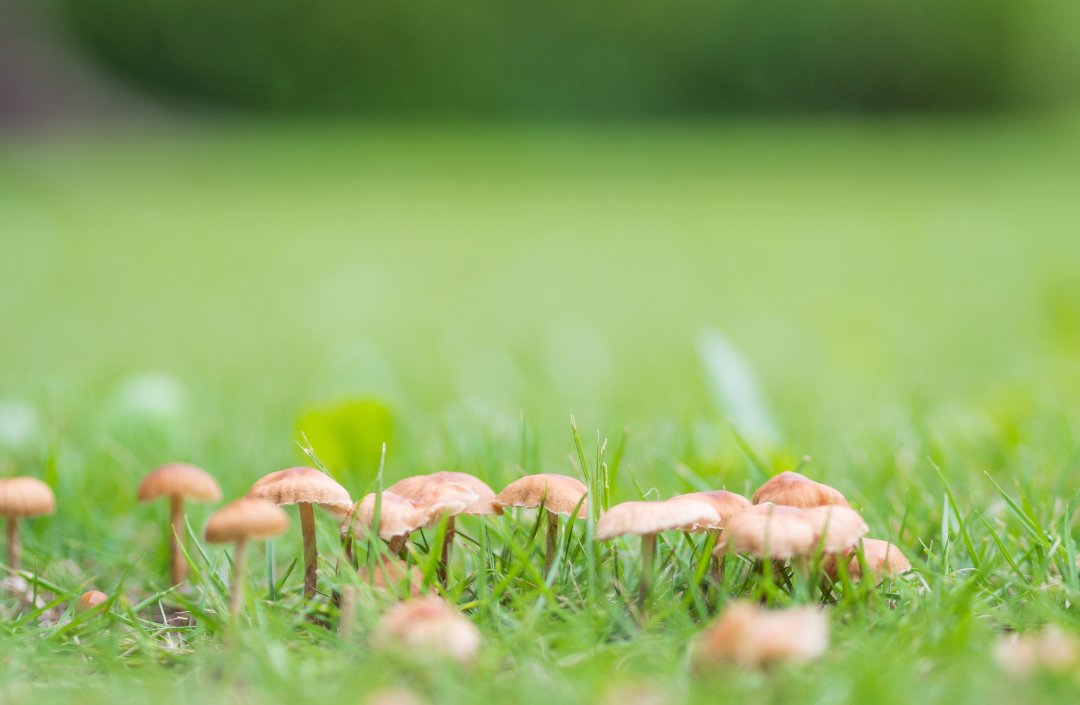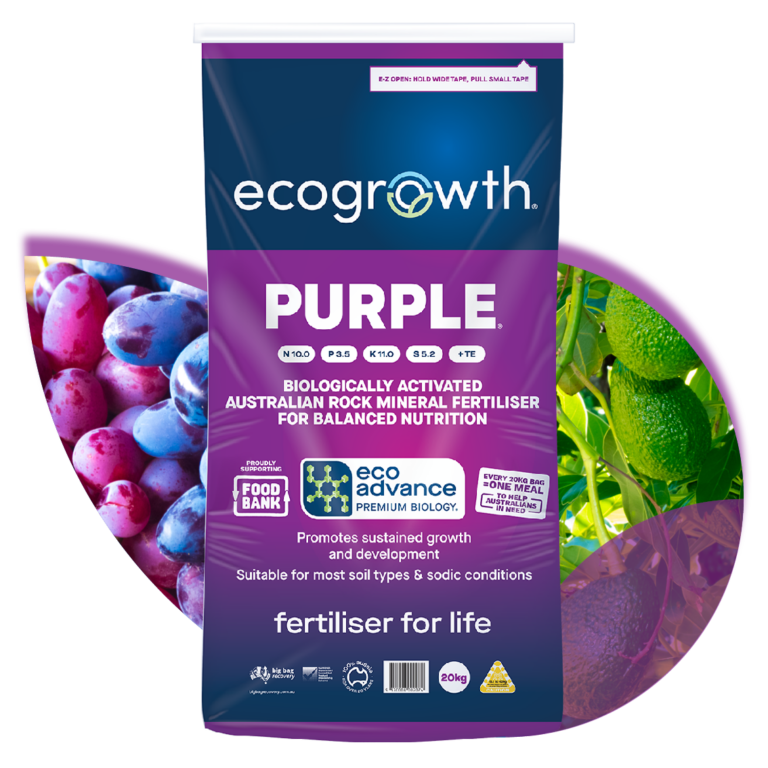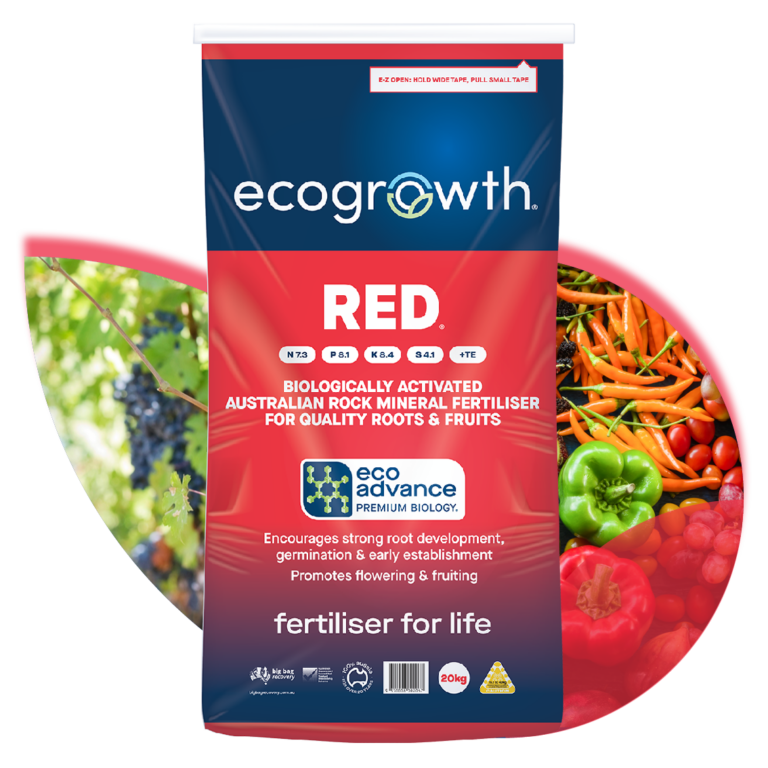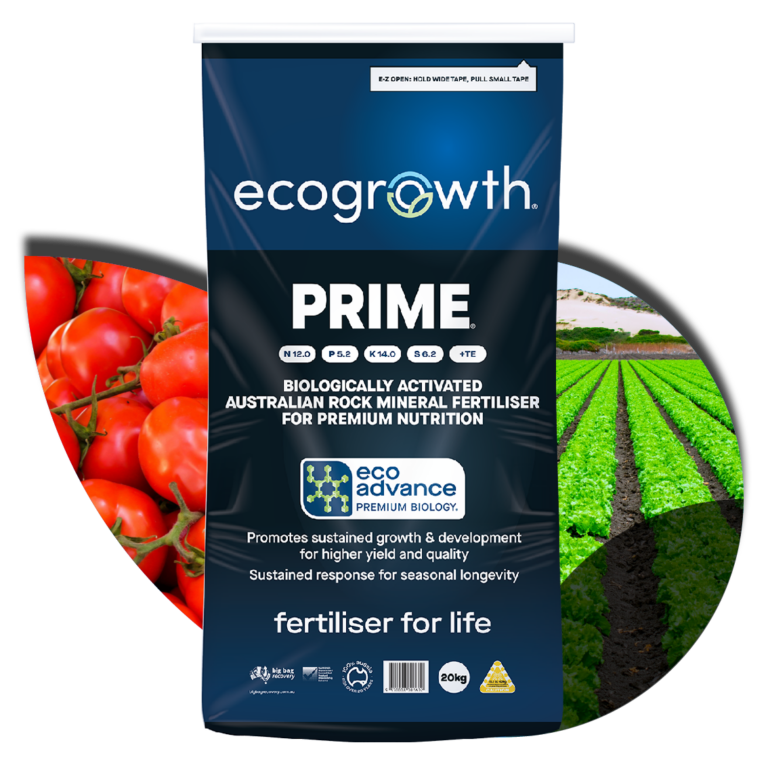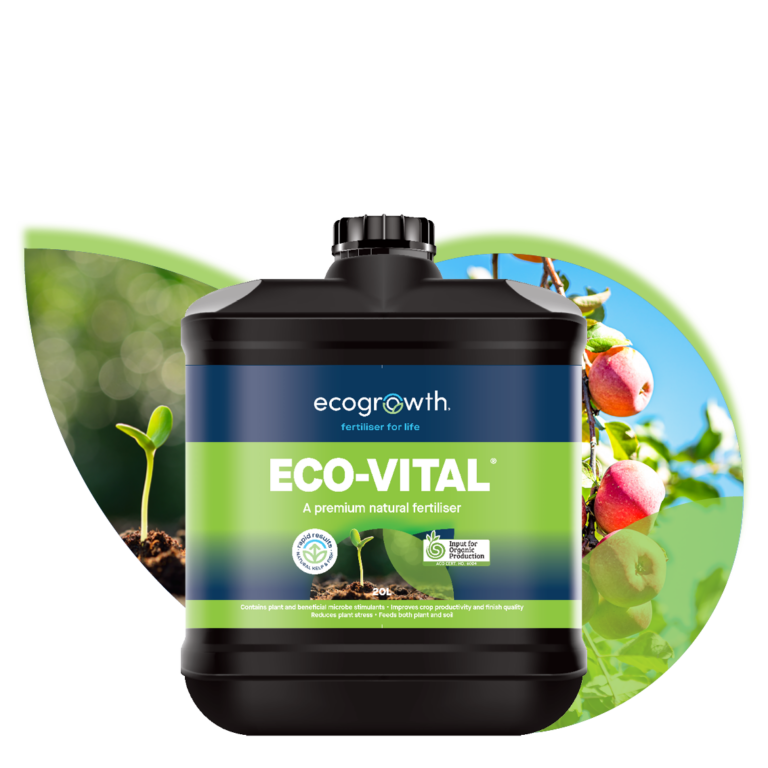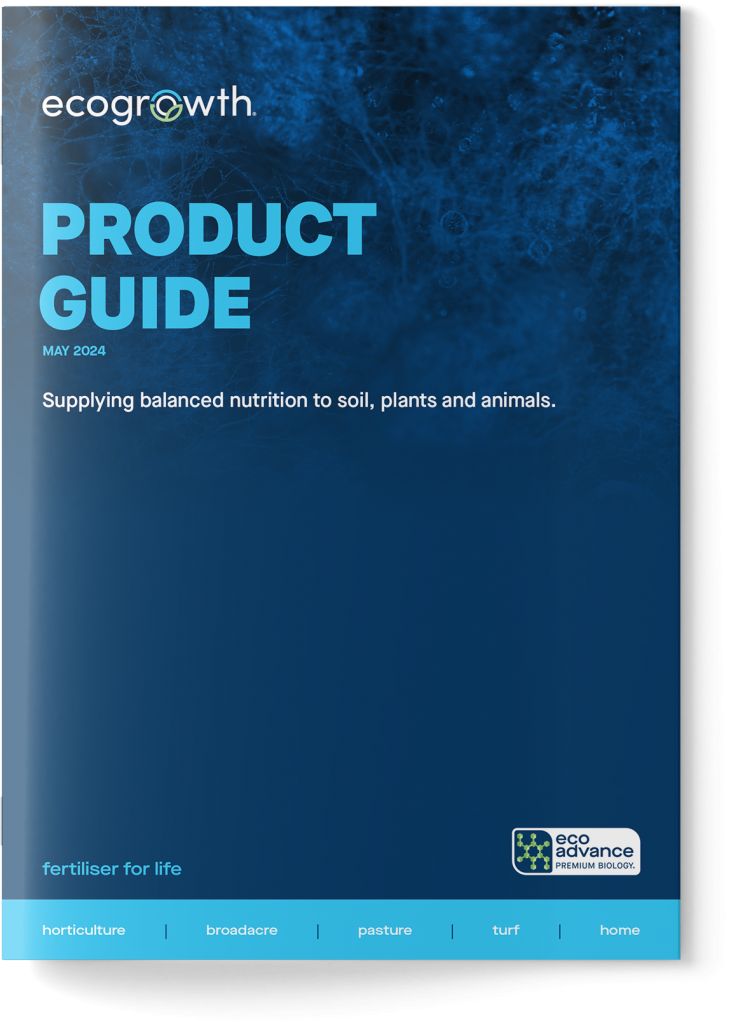
TECHNICAL ARTICLE
Lawnbassador Lawn Nutrition Program
Implementation and Results
Introduction
A healthy lawn depends on a healthy, biologically active soil. The Lawnbassador project was a collaborative initiative between Yard Empire lawn care specialists and Eco Growth International Pty Ltd. A 12-month, biologically focused lawn nutrition program was run, which demonstrated the effectiveness of enhancing soil biology for improved lawn and soil health.
Methodology
A comprehensive lawn nutrition program was implemented, which included the use of biologically activated granular fertilisers, supplemented by regular applications of liquid biostimulants. Soil analysis was used to assess the program’s impact from with soil sampled from two areas: the treated lawn area and an adjacent untreated verge area (Figure 1).
- Location: Rochedale South, QLD, Domestic residence.
- Lawn: Zoysia grass
- Pre-program soil testing: 19th Dec 2023
- Post-program soil testing: 21 Dec 2024
- Fertiliser Program:
- Emerald® (50g/m2) -> Feb ’24 – 1 x application
- Eco-Vital® (100ml/5L/100 m2) -> Fortnightly – 23 x applications
- Eco-Wet® (500ml/50 L/100 m2) -> Quarterly – 4 x applications
- Eco-Humate (150ml/7.5L/100 m2) -> Quarterly – 4 x applications
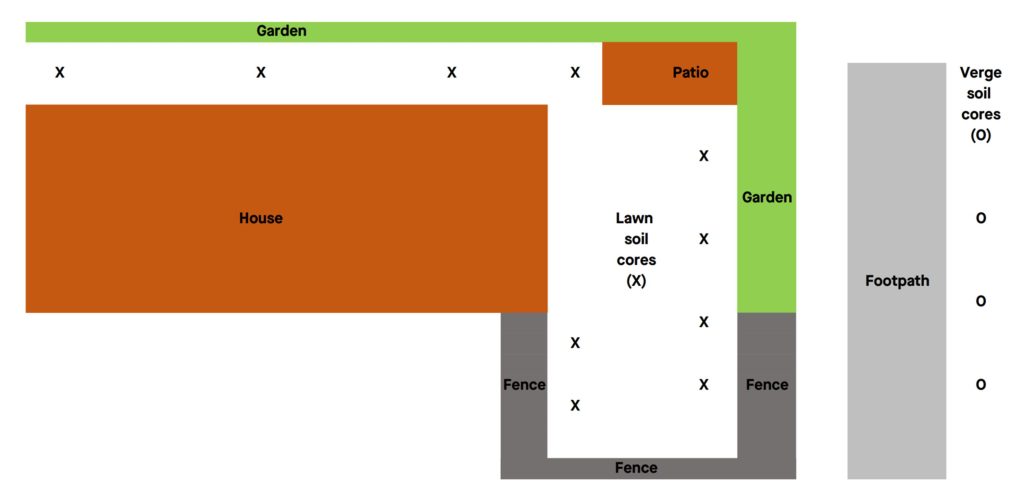
Figure 1: Soil sampling plan, where soil was sampled from soil cores spread across the lawn area that received the fertiliser treatment and compared to verge soil.
Results
- Soil Visual Improvements: The treated lawn exhibited a darker soil colour and improved structure, indicating healthier soil conditions (Figure 2).
- Increased Soil Biological Activity: Solvita soil respiration assays confirmed that the lawn soil had significantly increased biological activity after the year-long treatment compared to the untreated verge area (Figure 3A).
- Enhanced Microbial Balance and Biomass: The microbiometer assays showed increased microbial carbon biomass and a better fungal-to-bacterial balance exclusively in the lawn soil, indicating that a more stable and healthy soil microbiome was achieved (Figure 3B).
- Nutrient Availability: The improvements in soil biology directly correlated with an increase in soil cation nutrient availability, which was not the result of any changes in total soil nutrient reserves (Figure 4).

Figure 2: Photographs of individual soil cores taken across the lawn area, representing soil sampled before (Dec 2023) and after (Dec 2024) the fertiliser program. In response to the program, the soil developed a visibly darker colour with improved soil structure, particularly less soil compaction.

Increase in soil microbial activity and biomass
Figure 3:
A) The Solvita soil respiration assay is used to measure soil microbial activity. After equal amounts of soil are placed into jars with Solvita paddles (top image), the release of carbon dioxide through microbial respiration interacts with gel on the paddle, causing a colour change proportional to microbial activity and the amount of carbon dioxide released. Lawn and verge soil had comparable, mid-range soil microbial activity before the fertiliser program (Dec 2023). Solvita paddles exposed to soil collected in December 2024 show that fertiliser treatment increased soil microbial activity in lawn soil, as reflected by the more yellow colour for lawn compared to verge soil, the latter of which displayed a slight increase in microbial activity due to seasonal effects.
B) Microbiometer microbial carbon biomass assay used to quantify soil biology amount. In response to the fertiliser program, lawn soil increased in soil biology total amount (microbial carbon biomass, MBC; top graph) and proportion of fungi compared to bacteria (bottom pie charts), whereas verge soil biology amount and fungi/bacteria proportions remained unchanged during the same time period.

Change in soil nutrient availability
Figure 4: Lawn soil nutrient analysis. Composite soil samples were analysed by an industry-standard soil laboratory. Noticeable increases were observed in soluble and exchangeable levels of major soil cations Phosphorus (P), Calcium (Ca), Potassium (K) and Magnesium (Mg), despite minimal change in their total soil amounts. Increased soil nutrient availability was accompanied by an increase in soil organic matter. Data are mg/kg unless otherwise specified.
Conclusion
The Lawnbassador lawn nutrition program significantly improved soil biology, which in turn enhanced lawn quality. All the noticeable improvements in the lawn’s health are a direct result of improved soil health. The collaboration between Yard Empire and Eco Growth International Pty Ltd successfully demonstrated that a biologically focused lawn care program can yield long-term, sustainable improvements in lawn health, reducing the need for chemical interventions and fostering a more resilient and resource-efficient lawn.

Figure 5: Before and after highlighting the lawn quality changes resulting from the fertiliser program and improvements in soil biological health.
Homeowner Feedback
The Homeowner reported noticeable improvements in lawn health, including:
- Reduced weed presence.
- Thicker turf with more robust growth.
- Reduced water consumption.
- Richer, more vibrant lawn colour.
- Improved resilience with quicker recovery after stress events.
- Increased mushroom growth after rainfall, indicating better soil health.
Related products
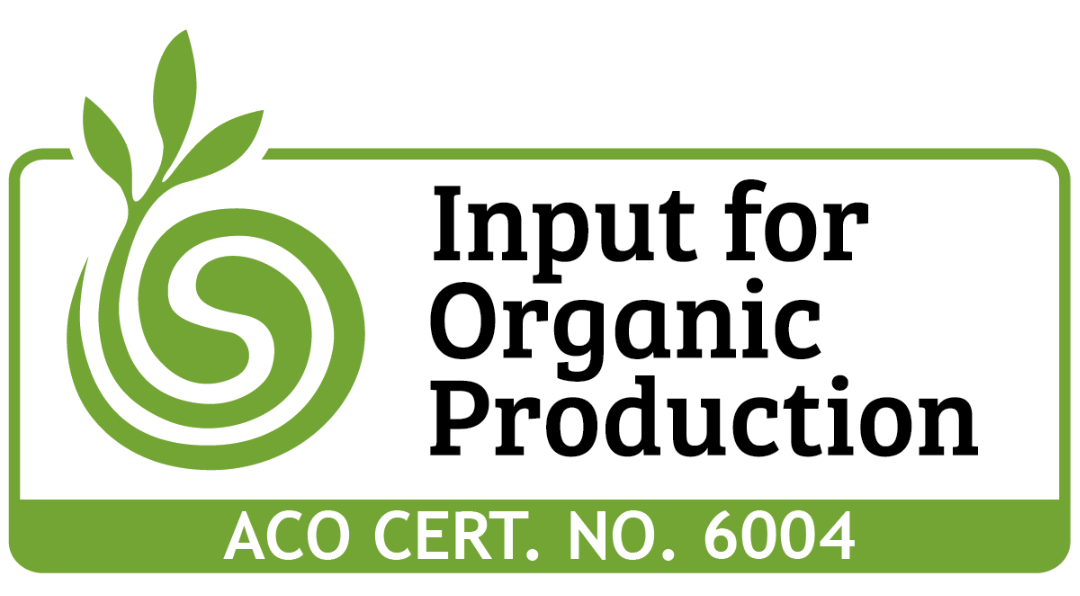
Eco-Vital®
A premium natural kelp and fish fertiliser with plant extracts that delivers rapid results.




